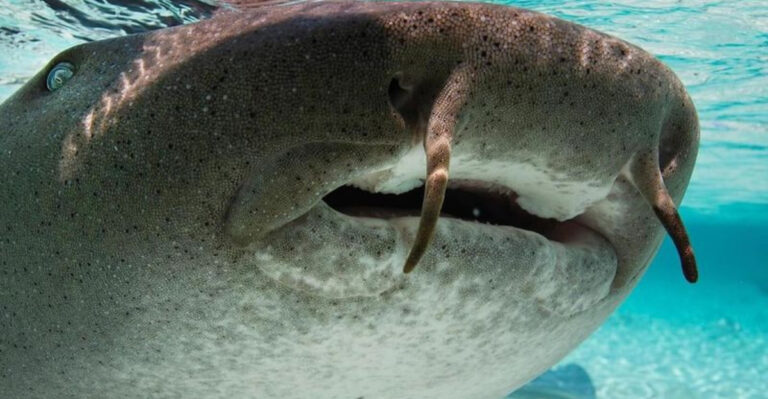13 Snakes You Might Encounter On Your Hike Along The Appalachian Trail
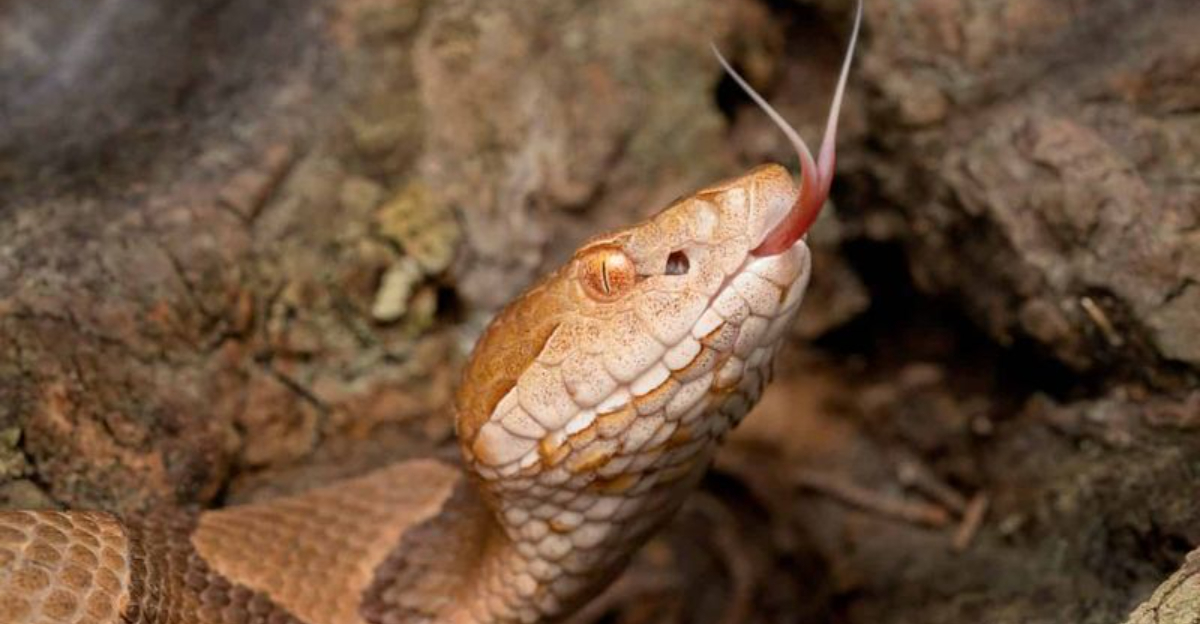
Hiking the Appalachian Trail means sharing the path with amazing wildlife, including several snake species.
While most snakes you’ll meet are harmless and shy, knowing which ones you might cross paths with helps keep both you and these incredible reptiles safe.
Whether you’re planning your first day hike or tackling the entire 2,190-mile journey, here’s a guide to the slithery neighbors you might meet along the way.
1. Eastern Timber Rattlesnake
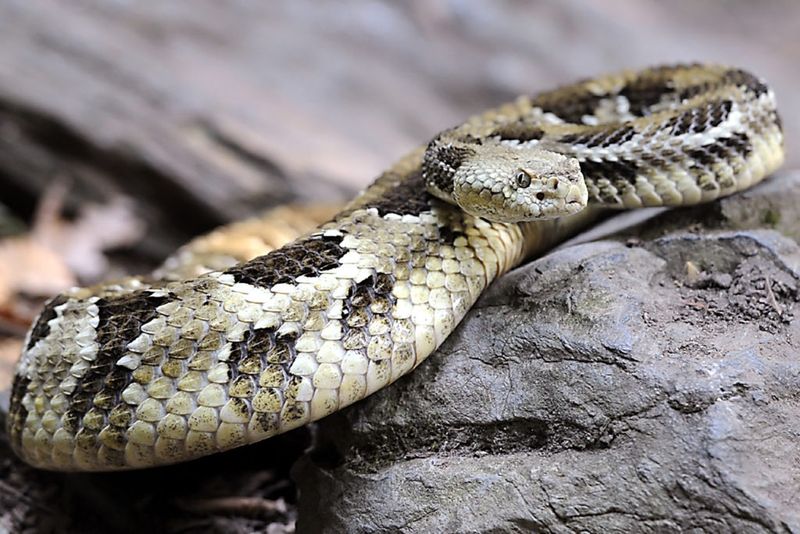
The most feared snake on the trail has a distinctive rattle that serves as nature’s warning system. When hiking rocky outcrops and sunny ledges, keep your eyes peeled for their yellow-brown bodies with dark crossbands.
Despite their venomous reputation, timber rattlers prefer escape over confrontation. They typically coil and rattle before striking – giving you plenty of time to back away slowly. Most bites happen when people try to handle or kill these magnificent creatures.
Fun fact: Timber rattlesnakes can live up to 30 years in the wild, making them one of the longest-living venomous snakes in North America!
2. Northern Copperhead

Copper-colored with hourglass-shaped crossbands, these venomous beauties blend perfectly with fallen leaves on the forest floor. Unlike rattlesnakes, copperheads give no warning before striking, making them trickier to avoid.
Found mostly in the southern and central portions of the trail, they love wooded areas with plenty of rocks and logs. Many hikers walk right past without noticing them – exactly how the copperhead prefers it!
Always watch your step when traveling through leaf litter, especially during early morning or evening when these snakes are most active. Their excellent camouflage is both their greatest defense and the main reason for accidental encounters.
3. Black Rat Snake
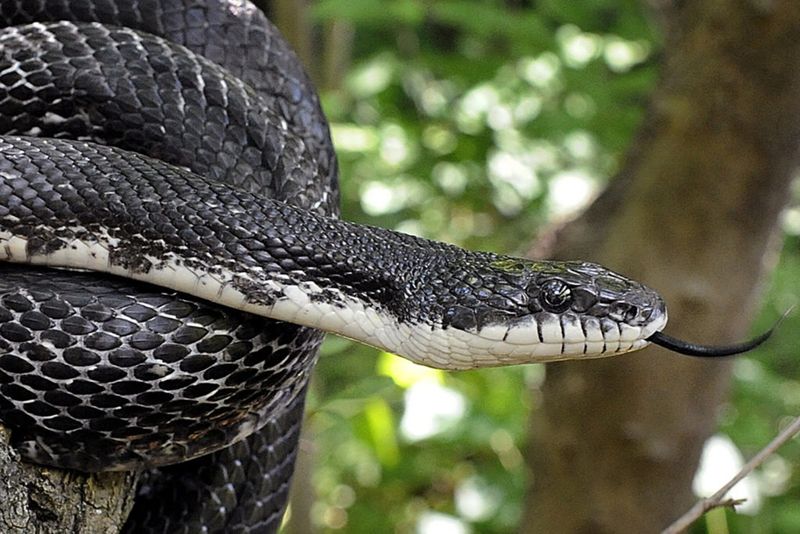
Stretching up to 8 feet long, these impressive non-venomous climbers might startle you from overhead branches! Shiny black with a white chin, black rat snakes are the gentle giants of the Appalachian Trail.
These helpful creatures keep the rodent population in check, potentially reducing your chances of encountering ticks and Lyme disease. Many hikers consider spotting one to be good luck on their journey.
Don’t be alarmed if you see one climbing a tree or shelter wall – they’re excellent climbers searching for bird eggs or small mammals. While they might vibrate their tails mimicking a rattlesnake when threatened, it’s all bluff with no bite to back it up.
4. Eastern Garter Snake
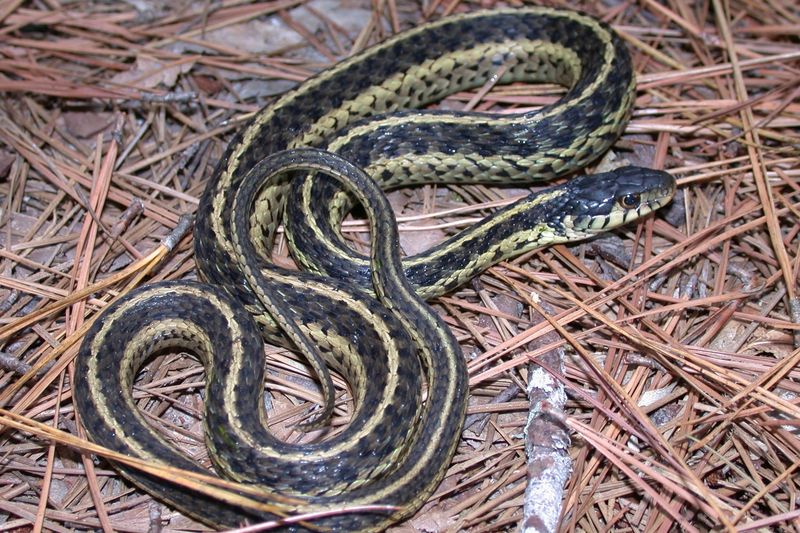
The friendliest face among trail serpents, garter snakes sport three yellow stripes running down their olive-green bodies. You’ll often spot these harmless creatures sunning themselves near water sources throughout the entire trail.
Quick to flee when approached, garter snakes rarely bite even when handled. Their diet consists mainly of worms, frogs, and small fish – making them completely harmless to hikers.
Seeing multiple garter snakes together isn’t uncommon, especially in spring when they emerge from communal winter dens. Some hikers consider them the unofficial welcome committee of the AT, as they’re often the first snake species spotted on many journeys.
5. Northern Water Snake
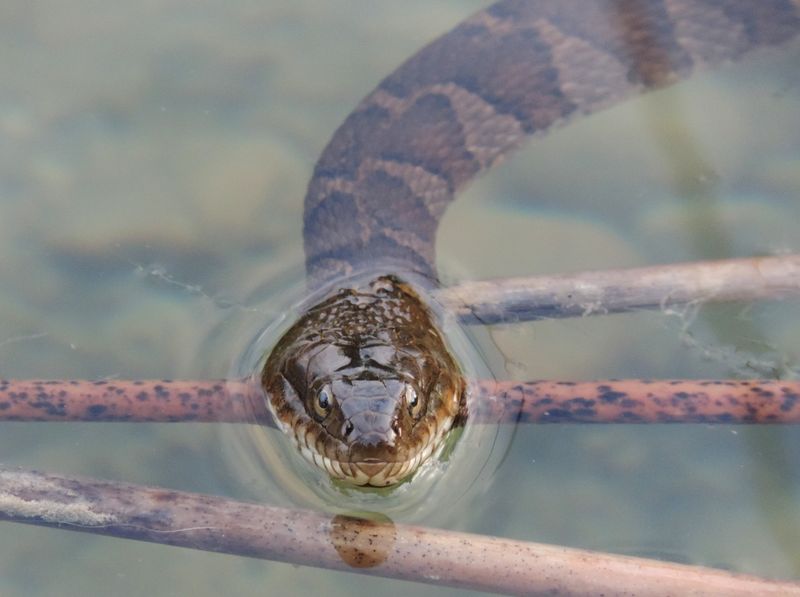
Frequently mistaken for cottonmouths, these non-venomous swimmers love hanging out near the trail’s many water crossings. Their thick bodies display dark crossbands on a brown or reddish background, though older snakes often appear uniformly dark.
Northern water snakes can be grumpy when cornered, delivering a painful bite if handled. Best to admire these fish-hunters from a distance as they patrol streams and ponds.
When swimming, they keep their entire body at the water’s surface, unlike venomous water moccasins which swim with only their head visible. This key difference helps hikers identify them correctly when cooling off in swimming holes along the trail.
6. Eastern Hognose Snake
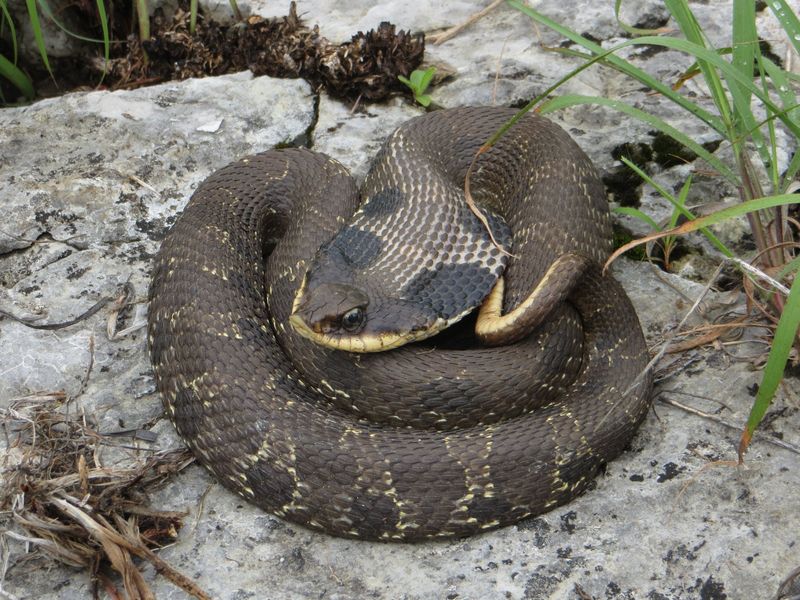
Nature’s best actor puts on quite a show when threatened! With an upturned snout resembling a pig’s nose, these theatrical snakes first try intimidation by flattening their necks cobra-style and hissing loudly.
If that doesn’t work, they roll onto their backs, tongue hanging out, playing dead so convincingly they might emit a foul smell and even bleed from their mouth. Once the coast is clear, they’ll peek around before slithering away.
Despite their dramatic performance, hognose snakes are harmless to humans. Their specialized snout helps them dig for their favorite meal – toads. Watch for their distinctive performance in sandy soil areas along the southern portions of the trail.
7. Rough Green Snake
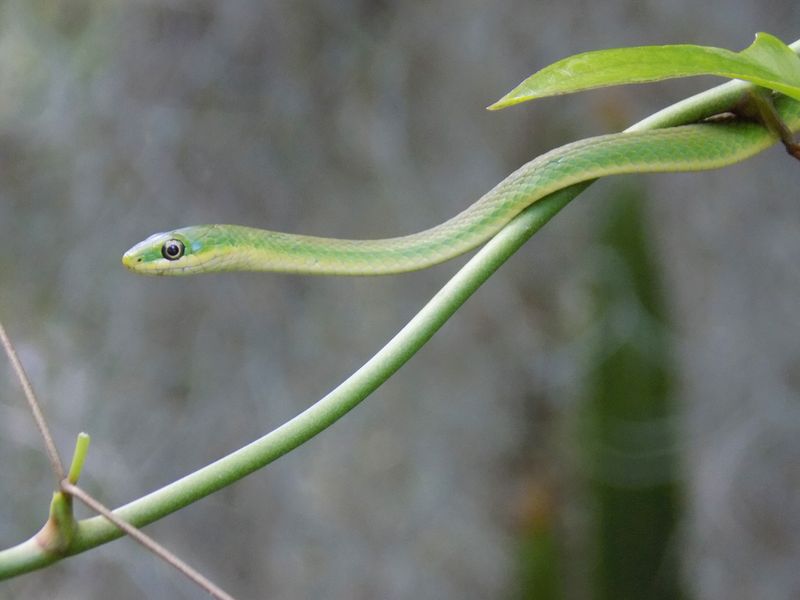
Bright green and slender as a pencil, these arboreal beauties bring a splash of color to the trail. Often called vine snakes, they’re masters of disguise among leafy branches where they hunt for insects and spiders.
Completely harmless and gentle-natured, rough green snakes rarely bite and prefer fleeing over confrontation. Their brilliant emerald coloration fades to blue after death, which is why preserved museum specimens don’t capture their true beauty.
Look up when taking breaks – you might spot one of these delicate creatures moving gracefully through shrubs or low tree branches. Many thru-hikers consider spotting a rough green snake to be one of the trail’s most magical wildlife encounters.
8. Eastern Milk Snake
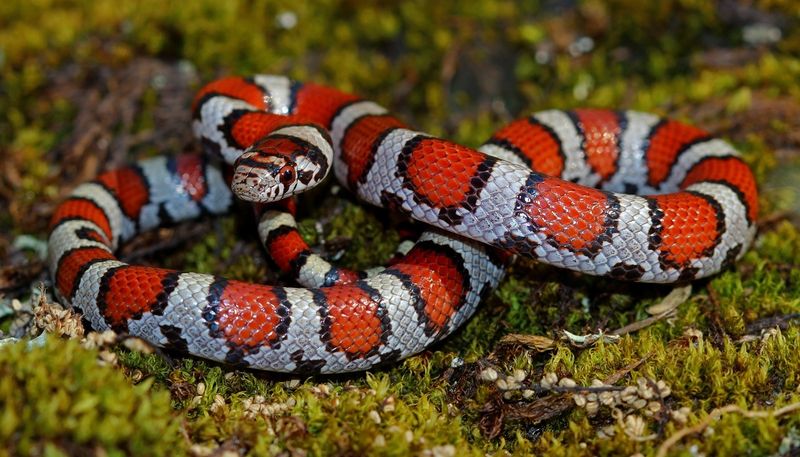
With striking red, black, and cream bands, milk snakes are often mistaken for coral snakes, though the dangerous coral snakes don’t live along the AT. Remember the rhyme: “Red touch yellow, kill a fellow; red touch black, friend of Jack.”
Milk snakes got their name from an old farmer’s myth that they would sneak into barns to drink milk from cows. In reality, they were hunting the mice that were attracted to the barns!
Secretive and mostly nocturnal, you’ll typically find them hiding under logs and rocks during the day. Consider yourself lucky if you spot one of these beautiful constrictors – they’re among the most colorful snakes you’ll encounter on your hike.
9. Ring-necked Snake

Small and secretive, these gorgeous little snakes measure just 10-15 inches long. Their dark backs contrast dramatically with bright orange-yellow bellies, and a distinctive ring around their neck gives them their name.
Ring-necked snakes spend most of their time hiding under rocks, logs, and leaf litter. Many hikers only discover them when moving camping gear that’s been sitting on the ground overnight.
Though technically mildly venomous, their toxin is only effective against their tiny prey like salamanders and worms. They’re completely harmless to humans and will often curl their tails to display their bright underside when handled – a gentle warning rather than an aggressive threat.
10. Timber Rattlesnake (Yellow Phase)
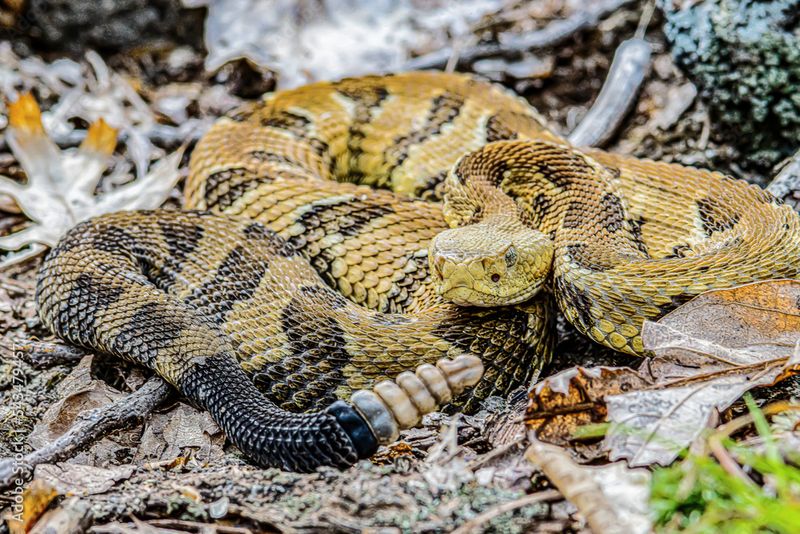
The yellow phase of the timber rattlesnake looks so different from its darker cousin that many hikers think it’s an entirely different species! With a bright yellow background and bold black chevrons, these snakes stand out against the trail’s landscape.
Most common in the trail’s mid-Atlantic section, yellow phase timber rattlers favor rocky mountainsides with southern exposure. They’re particularly visible during late summer when pregnant females bask openly on sun-warmed rocks.
Despite their more visible coloration, they’re just as venomous as their darker relatives. Give them plenty of space when encountered, and never step or reach where you can’t see first, especially in rocky terrain.
11. Eastern Worm Snake
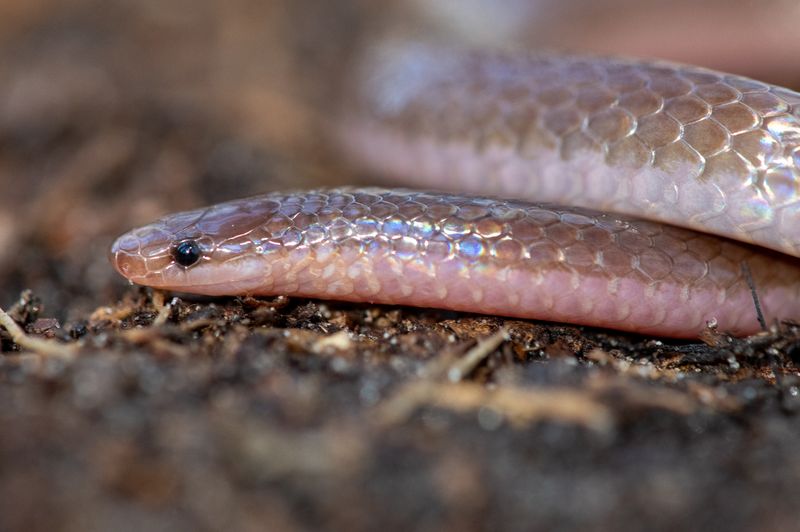
Resembling an oversized earthworm, these tiny, glossy brown snakes rarely exceed 13 inches in length. Their pointed head works like a shovel, helping them tunnel through soft soil and leaf litter in search of their favorite meal – earthworms.
Completely harmless and incredibly shy, worm snakes are a rare find even for experienced hikers. You’re most likely to encounter one after heavy rain when they sometimes surface from their underground homes.
If you’re lucky enough to spot one, notice how smooth and shiny their scales are – an adaptation that helps them slip through soil with minimal resistance. Their pinkish-white belly creates a stark contrast with their chocolate-brown back.
12. Northern Red-bellied Snake
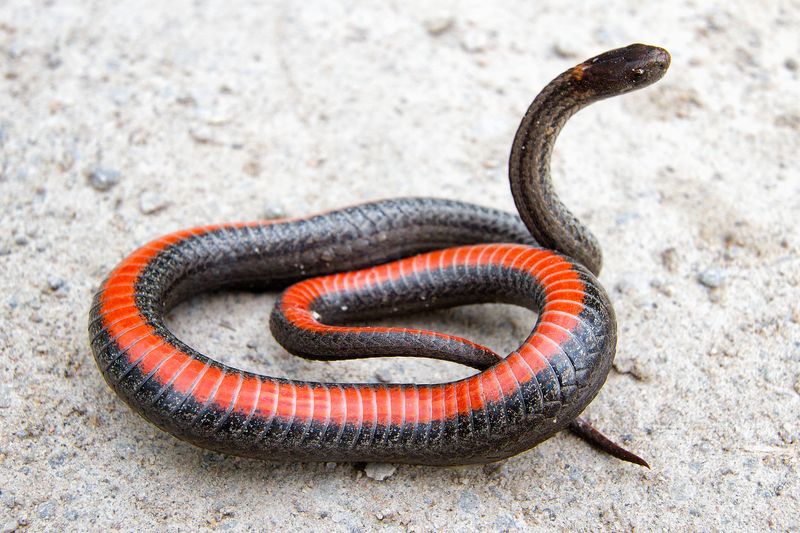
Small enough to fit in your palm, these diminutive forest dwellers rarely grow beyond 16 inches. Despite their name, their most noticeable feature is often three light spots just behind the head, while their reddish belly remains hidden from view.
These harmless snakes feast on slugs and snails, making them gardeners’ friends. You might spot them near camp areas where food scraps attract their slimy prey.
Red-bellied snakes are most active after rain when their favorite foods come out. They’ve adapted to cooler climates, making them one of the few snake species you’ll encounter in the northern sections of the trail well into autumn when most other snakes have already begun hibernation.
13. Queen Snake
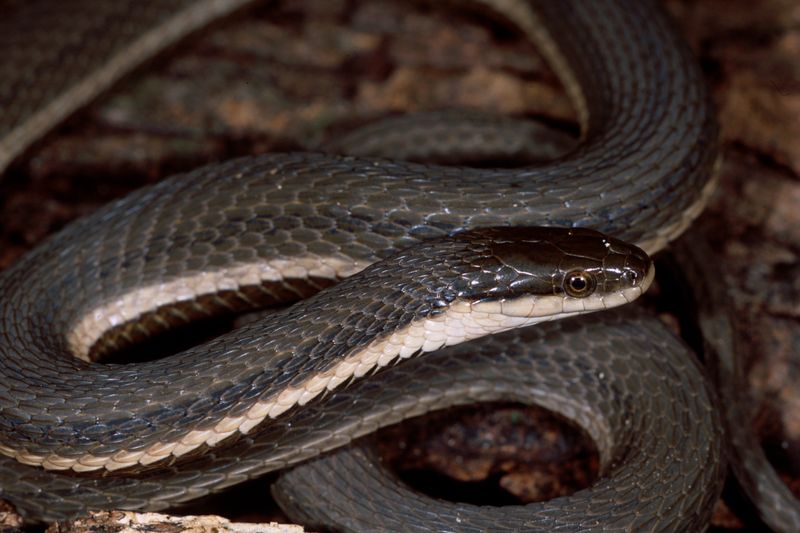
Specialized hunters with particular tastes, queen snakes almost exclusively eat freshly-molted crayfish when their shells are still soft. This dietary preference keeps them strictly near rocky streams and rivers along the trail.
Olive-brown with subtle stripes and a yellow belly with four dark lines, queen snakes often bask on branches overhanging water. They’ll drop into the stream at the first sign of danger, swimming gracefully to safety.
Since they depend on clean water with healthy crayfish populations, spotting a queen snake is a good indicator of a pristine ecosystem. Their presence signals a healthy watershed – something increasingly rare and worth celebrating during your AT adventure.





